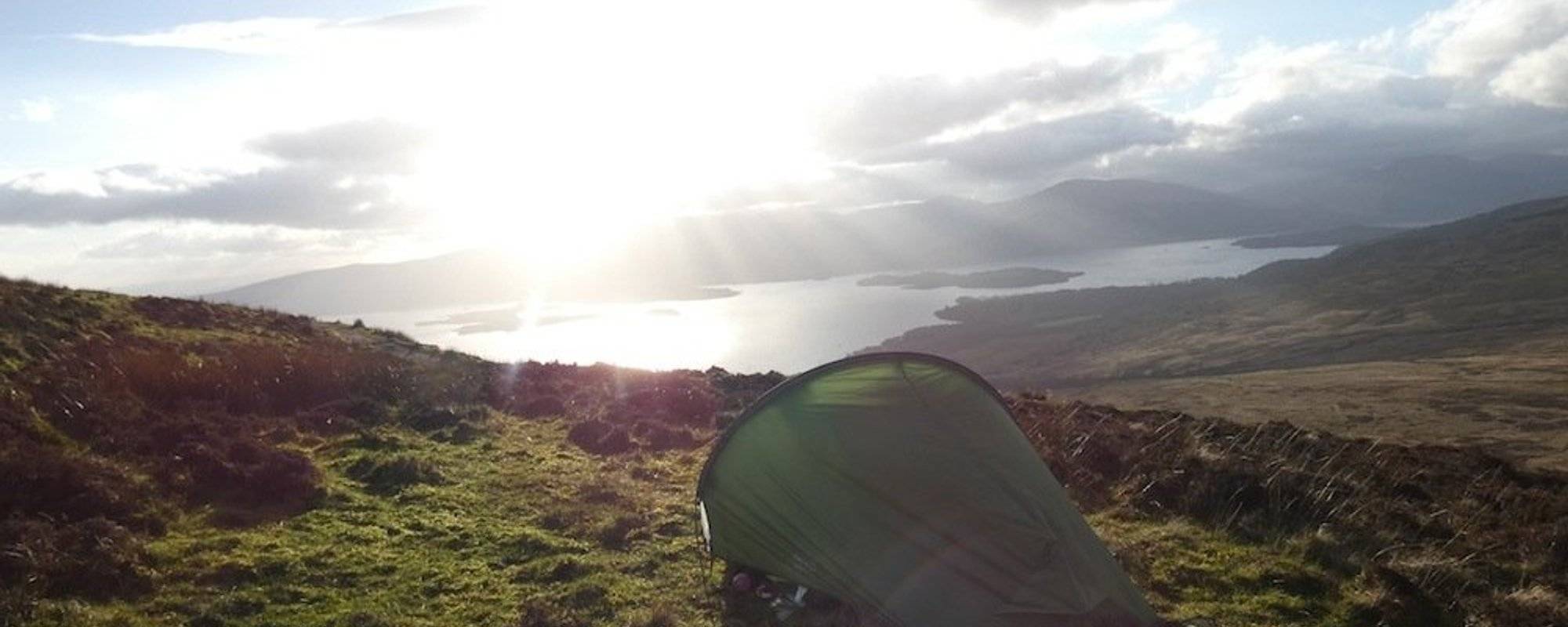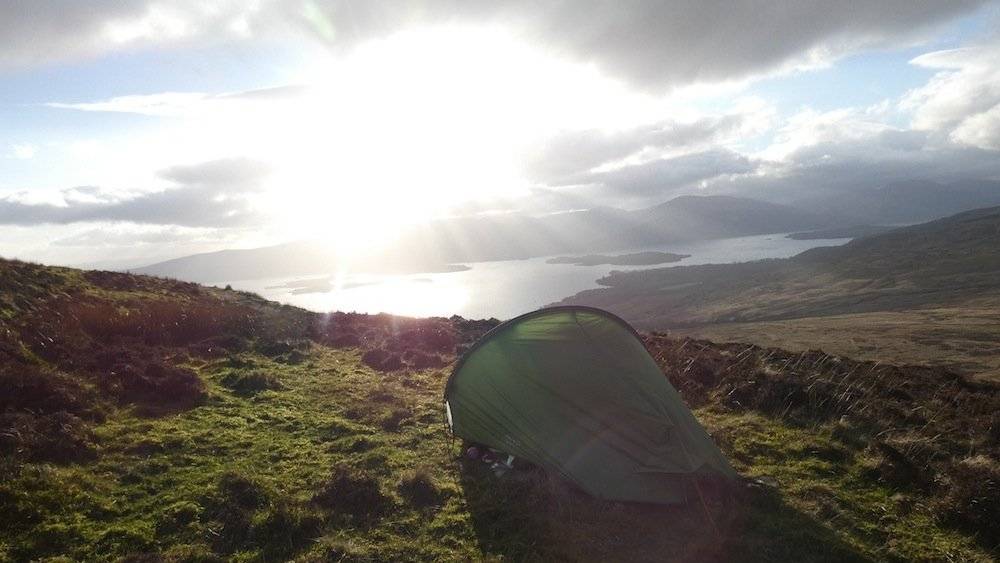
I've been very busy recently, preparing for my Mountain Leader award. The week-long assessment takes place at the end of this month, and in order to qualify, along with reading and paperwork requirements, I need to have done at least 40 "Quality Mountain Days" (QMDs), which involves climbing mountains under certain conditions; and at least eight nights of camping, four of which must be wild camping.
Anyone who reads my blog regularly will not be surprised that I have fulfilled the QMDs requirement. But I still needed to do a few more wild camping nights. The Mountain Leader assessment involves a two-night camping expedition, so I decided to prepare for this by doing a two or three-day wild camping trip, carrying everything I would need on my back.
The weather has been very cold recently, with snow at high levels. I didn't want to have to carry heavy winter walking gear along with my tent, sleeping bag and extras to keep me warm! So this would have to be a low-level expedition.
I started to think more and more about doing part of the West Highland Way (WHW). This is Scotland's most popular trail walk, extending over 154km (96 miles) from Milngavie, a town just north of Glasgow, to Fort William, close to Ben Nevis, the UK's highest mountain. It runs close to Loch Lomond for almost half of the way, and then alongside the beautiful Glen Orchy hills and the dramatic mountains of Glencoe.

Map showing the West Highland Way. I just did the first half, from Milngavie to Crianlarich – about 81.5km (50.5 miles).
I've wanted to do this walk for over a decade, but for some reason I've never quite got round to it.
It takes most people about a week to walk the West Highland Way, although competitive people and hill runners will try to do it in three days.
The fastest time for running the West Highland Way is a mind-boggling 13 hours and 41 minutes. When you start to walk the WHW, you realise what an incredible achievement this is, as much of the route that runs alongside Loch Lomond is rocky and undulating, with many steep sections and complex bouldery terrain.
The most tricky section is the 15-16km that runs close to the east side of Loch Lomond, from a few kilometres north of Rowardennan to the northern end of the Loch. I had heard so much about this section over the years that I was well prepared for it. Friends who walk regularly in the hills and are very fit told me stories of enormous blisters and ruined walking shoes.
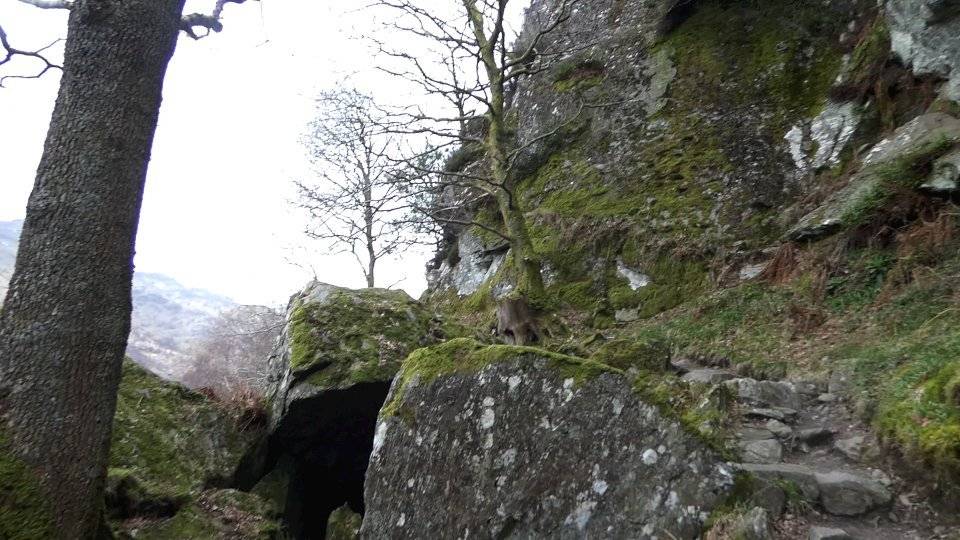
One of the rockier sections of the West Highland Way – beautiful and remote, but care is needed!
I knew that I would have to take my time on this bit, so I decided to aim to do an extra long walk on Day 1, hoping to reduce the distance for Days 2 and 3.
Escape routes
I also devised a couple of "escape routes" in case I found the whole thing too tiring or too hard on my feet. I would be carrying a heavier load on my back than I've ever carried before, and I wasn't sure how my physiology would cope with this!
There is no public transport available along most of the east side of Loch Lomond. There is a ferry that crosses the loch to Ardlui, from where you can get a train – but it only operates in the summer months. So if I found the walk too hard-going, I would have to cut it short on Day 1. After that, there would be no going back until I reached Crianlarich!

I needed to buy an expedition backpack for doing my ML assessment, and this would be an important trial run in using it. I decided to buy the cheapest pack I could find – not just because funds are tight, but as I'm new to this type of walking, it would be a bit of a learning curve. No point splashing out on an expensive pack with lots of attributes that I might never make use of.
I found a 60-litre pack at Decathlon for the incredible price of £39.99. It's pretty comfortable, not too heavy, and the most important thing for me was that I could adjust it to comfortably fit my fairly small frame. I did notice that it wasn't quite as snug a fit as my much more expensive Deuter 32-litre backpack, and the separate compartments were not very expandable. It also doesn't have a rain cover, but these can be bought very cheaply, and in any case, I have a spare one.
With a backpack twice as voluminous as the one I usually carry for one-night camping trips, I thought I'd be able to take the kitchen sink with me! The only extras I would need to take would be two more days of food and a very light car windscreen frost protector, which I use as a ground liner.

The car windscreen frost protector I use on colder nights as an insulating layer between my tent groundsheet and my sleeping mat. It weighs just 100g.
But even with an extra 30 litres' capacity, I found it almost impossible to stuff everything in. I had to leave a few things out – I can't even remember what they were, so they can't have been that important!
Things I could have left behind – but didn't
• A couple of light extra tops. As a hillwalker, I usually throw in an extra layer or two, as the temperature falls at altitude. Walking and camping at low level, I needed warm clothes to wear in the evenings, but one fleece jacket was more than enough.
• I took three extra pairs of socks. I could have left one thick pair behind.
• I took two packets of boil-in-the-bag rice and two packs of boil-in-the-bag dahl. These were filling and delicious, but their total weight was 1kg. Dried noodles (which I took for my third night's meal) would have weighed a lot less, or dried packs of food. I needed to consume a LOT of calories on this trip, but even six or seven packs of dried food would have weighed less than what I took.
• For some bizarre reason, I took three Ordnance Survey maps with me! These were bulky and relatively heavy. I think this was just control freakery, as I had the route on my phone OS app anyway! I should have just printed the route off on paper, as I usually do.
Learnings
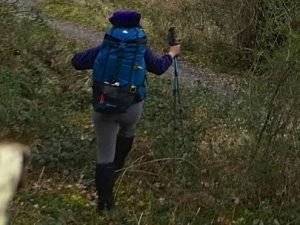
Me wearing my enormous backpack. This photo makes me understand why some dogs go into a frenzy when they see someone with a backpack!
This was an immensely enjoyable trip. However my feet did get very achey, right from the first day – considerably more so than when I've done walks of this distance before. I also felt occasional small twinges in my knees. I think this was due to the 13kg load I was carrying on my back. Carrying this kind of load over long distances can clearly have a negative physiological impact, and although it's great to find out what my body is capable of, it's not something I would want to do too often.
Note: bag-carrying services for the WHW are available at a cost of around £10 a day. I would have used this service if I hadn't been doing this as a wild camping experiment.
Ready to Blog & Earn?
With TravelFeed, easily start your own travel blog and earn as you go. It's the smart platform for travelers who want to profit from their passion. Create a free account
One concern I had was that if it rained, what would it be like carrying a wet tent on my back? Luckily it didn't rain until the last night, so I only had to carry a wet tent for 1km, walking downhill to catch my train back home.
Not only did my tent keep me and all my belongings completely dry – the canvas didn't soak up much rainwater, so it was easy to pack up and I didn't notice any weight increase.
I'd imagine that heavy rainfall could make things considerably worse, so I'm hoping that won't be the case when I do my ML assessment!
I will describe each day of my trip in more detail in my next posts.
Don't Forget: Get Travel Health Insurance!
To make your trip a worry-free experience, TravelFeed recommends SafetyWing Nomad Insurance. It provides comprehensive health coverage while you travel, so you can focus on exploring, not the unexpected. Get a quote here
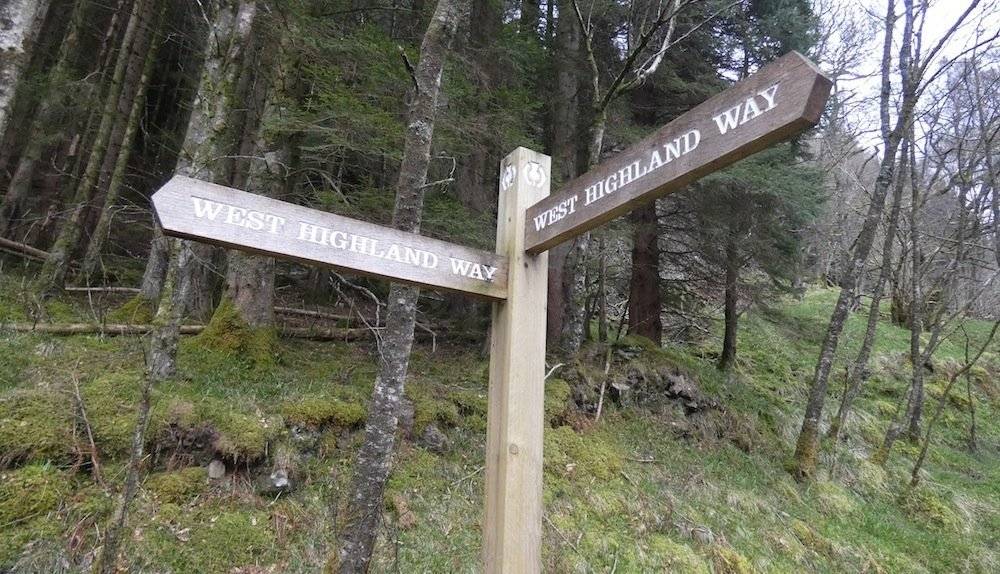
Posted from my blog with SteemPress : http://ramblingandscrambling.co.uk/walking/wild-camping-the-west-highland-way-part-1/


Travel Resources for your trip to United Kingdom
Recommended by TravelFeed
Flights: We recommend checking Kiwi.com to find the best and cheapest flights to United Kingdom.
Accomodation: Explore the best places to stay in United Kingdom on Booking.com, Agoda and Hostelworld.
Travel Insurance: Medical emergencies abroad can be pricey, but travel health insurance is not. We always use SafetyWing for affordable and reliable coverage.
Car Rental: For hassle-free car hiring, DiscoverCars is our trusted choice with a wide selection of vehicles.
Internet: Got an eSIM compatible phone? Airalo is perfect for reliable internet access during your trip. Just install it before you go, and you're set!
Day Trips & Tours: We recommend GetYourGuide for a variety of well-organized and enjoyable activities.
Travel Planner: Need a hand planning? Our free travel planner chatbot is your personal guide to United Kingdom. Chat now.
Disclosure: Posts on TravelFeed may contain affiliate links. See affiliate disclosure.
